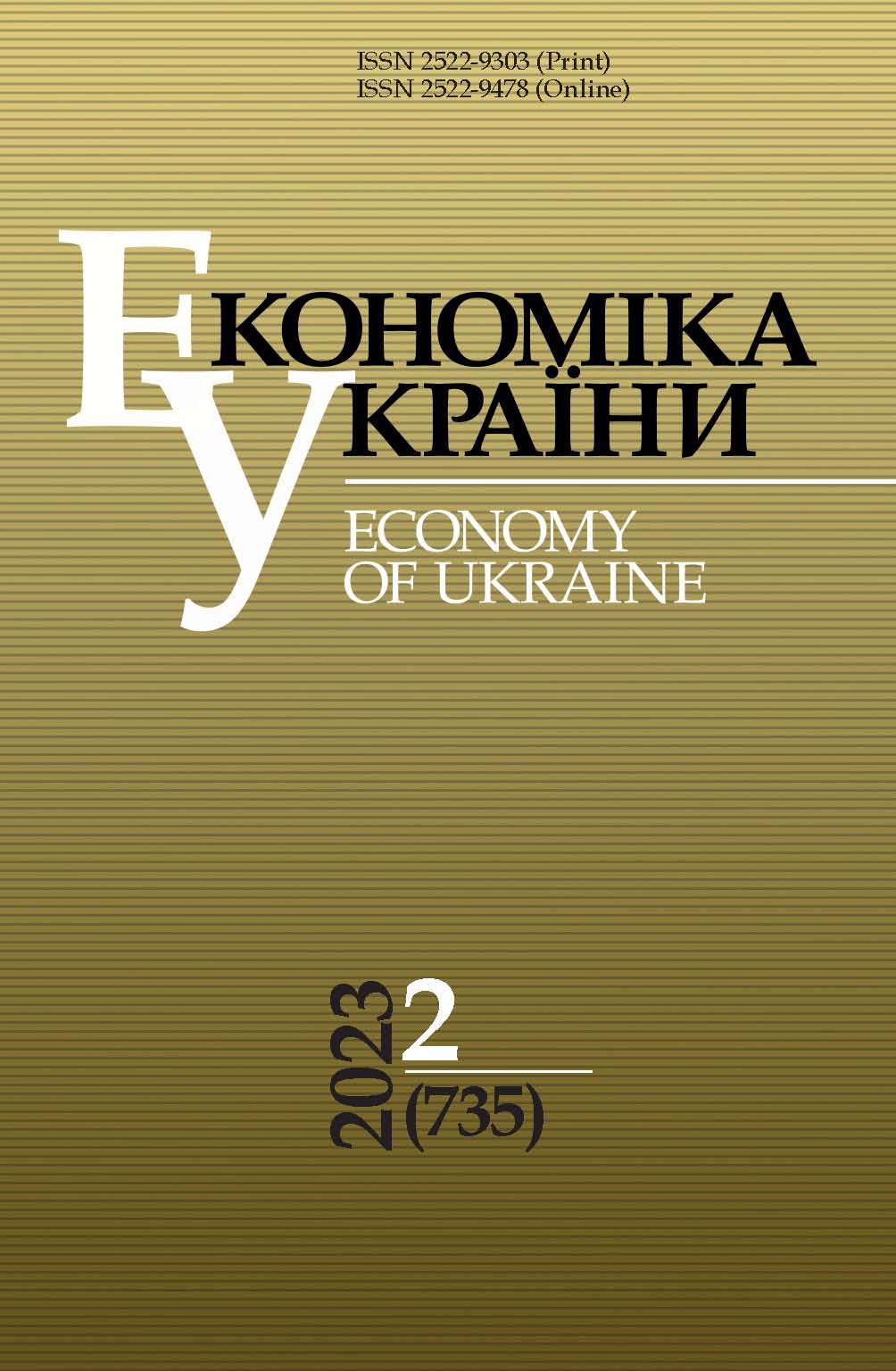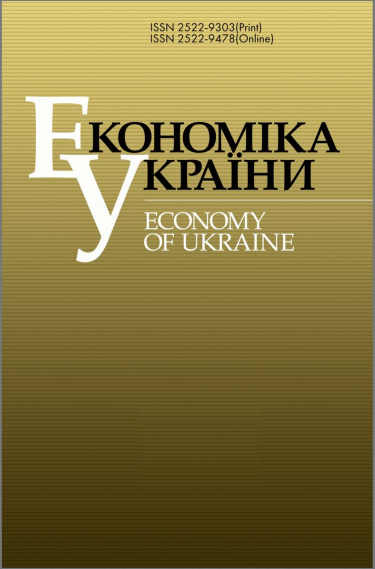LABOR MOBILITY ENHANCEMENT AS A FACTOR OF HUMAN CAPITAL DEVELOPMENT
DOI:
https://doi.org/10.15407/economyukr.2023.02.073Keywords:
human capital; labor mobility; labor market; structural disproportionsAbstract
Taking into account the increased importance of human capital in the modern world and its huge potential for economic development, creating favorable conditions for the accumulation of human capital and improving its characteristics will allow to obtain a significant and long-lasting socio-economic effect. Labor mobility is the fundamental prerequisite for its purposeful formation in today's dynamic world. Labor mobility is an objectively existing phenomenon of any labor market; it reflects the movement of labor force as a commodity, and its dynamics shape the market situation. Relocation is a significant factor affecting overall labor productivity, the use of labor force, and therefore, the formation and use of human capital. Labor mobility, which determines the qualitative characteristics of the labor force, its potential ability to change functions in the production of tangible and intangible goods, readiness for professional and qualification growth, mastering new professions, the ability to adapt in dynamic production conditions, is determined by the prospects of the structural transformation of the domestic economy, changes in the regional specialization in the process of post-war reconstruction of the economy and modern economic conditions, when technological processes and labor market requirements for the functional duties of employees are rapidly changing.
Structurally deformed, disproportionate, lacking its own stable drivers of development, the domestic economy is not able to properly respond to existing risks and crisis fluctuations. Troubles accumulated in the labor market are characterized not only by threats, but also by serious negative consequences. During wartime and in the period of post-war reconstruction, state policy measures in the field of preservation and use of human capital should be as effective as possible and aimed at reducing structural imbalances in the field of employment, ensuring the efficiency of "social elevators", improving the systemic package of legislative and socio-economic means for regulating the labor market and social and labor relations.
References
Blyzniuk V.V. Human capital as a factor of economic development (evolution of methodological approaches and modernity). Economics and Forecasting, 2005, No. 2, pp. 67-78 [in Ukrainian].
Bilyk O.M. The main directions of preservation and development of national human capital through labor mobility activation. Ukraine: Aspects of Labor, 2009, No. 1, pp. 43-46 [in Ukrainian].
Lichkovska M.R. Essence and tendencies of forming of labour mobility: national problems. Economy and Society, 2018, No. 18, pp. 667-673. URL: https://economyandsociety.in.ua/journals/18_ukr/93.pdf [in Ukrainian].
Shtunder I. Labor mobility as a means to ensure effective employment. Scientific Notes of «KROK» University, 2013, Vol. 34, pp. 115-122 [in Ukrainian].
Kovalyov O.S. To the question of labor mobility of workers in Ukraine in today's conditions. In: The European choice of Ukraine, the development of science and national security in the realities of large-scale military aggression and global challenges of the 21st century. Vol. 1. Odesa, 2022, pp. 584-587 [in Ukrainian].
Pristupa M. Transformation of labor relationships under the globalization influence: new problems of social policy. SOCIOPROSTIR, 2020, No. 9, pp. 23-30 [in Ukrainian].
Hall D.T. Protean careers of the 21st century. Academy of Management Perspectives, 1996, No. 10, pp. 8-16.
Sullivan S.E. The changing nature of careers: A review and research agenda. Journal of Management, 1999, No. 25, pp. 457-484.
Tikhonova L., Krasinets E. Labour Migration and Migration Policy of the Republic of Belarus within the Framework of Integration into the Eurasian Economic Union. Journal of International Law and International Relations, 2015, No. 2, pp. 67-71 [in Russian].
Courhene T.J. Interprovincial Migration and Economic Adjustment. The Canadian Journal of Economics, 2002, Vol. 3, No. 4, pp. 289-341.
Nesterova A.A. Labor mobility of the population in the context of regional integration. Minsk, 2020 [in Russian].
Tilikina N.V. The factors of the labour force space mobility and their classification. Demography and social economy, 2008, No. 2, pp. 163-169 [in Ukrainian].
Littler C.R., Wiesner R., Dunford R. The dynamics of delayering: Changing management structures in three countries. Journal of Management Studies, 2003, No. 40, pp. 225-256.
Arthur M.B., Rousseau D.M. Introduction: The boundaryless career as a new employment principle. In: The boundaryless career: A new employment principle for a new organizational era. M.B. Arthur, D.M. Rousseau (Eds.). New York, Oxford University Press, 1996, pp. 3-20.
Stahl G.K., Gerdin J. Global careers in French and German multinational corporations. Journal of Management Development, 2004, No. 23, pp. 885-902.
White M., Hill S., Mills C., Smeaton D. Managing to change? British workplaces and the future of work. Basingstoke, Palgrave Macmillan, 2004.
Bentein K., Vandenberg R.J., Vandenberghe C., Stinglhamber F. The role of change in the relationship between commitment and turnover: A latent growth modeling approach. Journal of Applied Psychology, 2005, No. 90, pp. 468-482.
Lance C.E., Vandenberg R.J., Self R.M. Latent growth models of individual change: The case of newcomer adjustment. Organizational Behavior and Human Decision Processes, 2000, No. 83, pp. 107-140.
Vandenberg R.J., Self R.M. Assessing newcomers’ changing commitments to the organization during the first 6 months of work. Journal of Applied Psychology, 1993, No. 78, pp. 557-568.
Anderson J.C., Milkovich G.T., Tsui A. A model of intra-organizational mobility. Academy of Management Review, 1981, No. 6, pp. 529-538.
Greenhaus J.H., Callanan G.A., Godshalk V.M. Career management. Orlando, 2000.
Saxenian A. Beyond boundaries: Open labor markets and learning in Silicon Valley. In: The boundaryless career: A new employment principle for a new organizational era. New York, Oxford University Press, 1996, pp. 23-39.
Louis M. Career transitions: Varieties and commonalities. Academy of Management Review, 1980, No. 5, pp. 329-340.
Nicholson N., West M. Managerial job change: Men and women in transition. Cambridge, Cambridge University Press, 1988.
Neal D. The complexity of job mobility among young men. Journal of Labor Economics, 1999, No. 17, pp. 237-261.
Tolbert P.S. Occupations, organizations, and boundaryless careers. New York, Oxford University Press, 1996.
Blyzniuk V., Yatsenko L. Features of labor market development in the conditions of formation of “new economy”. Scientific Bulletin of Poltava University of Economics and Trade. Series "Economic Sciences", 2021, No. 1(102), pp. 74-81 [in Ukrainian].
Sadovnichiy V.A., Akayev A.A., Korotayev A.V., Malkov S.Yu. Modelling and Forecasting World Dynamics. M., 2012 [in Russian].
Semykina M.V., Ishchenko N.A., Rodionova M.O. Motivation of effective employment: problems, trends, strategy selection. Kirovohrad, 2009 [in Ukrainian].
Downloads
Published
How to Cite
Issue
Section
License
Copyright (c) 2023 Publisher PH "Academperiodyka" of the NAS of Ukraine

This work is licensed under a Creative Commons Attribution-NonCommercial-NoDerivatives 4.0 International License.



